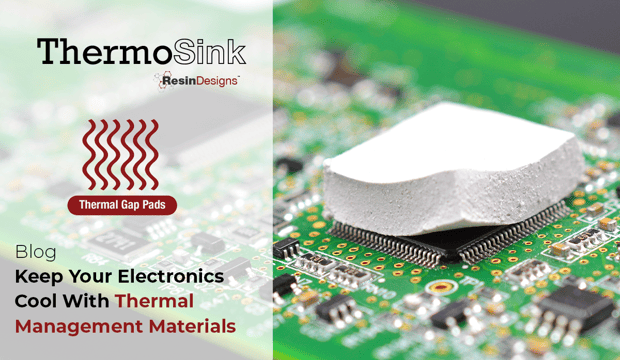
Nobody likes to get too hot, and if your high-tech electronics could talk, they’d say they feel the same way. Heat is their enemy. It reduces longevity and limits reliability, two non-negotiable properties in electronics. The lack of one or both can literally mean the difference between life and death in applications such as autonomous driving and aerospace controls.
Heat has consistently been one of the top reasons for electronics failure. As the demand for faster processing speeds in smaller packages continues to rise, so will the need for a proper thermal interface material (TIM).
Heat is created when electricity passes through traces and components in electronics. The smaller and more tightly packed the traces and components, the more heat likely will result. If left unmanaged, it will increase to temperatures capable of damaging sensitive components, resulting in premature failure. As package sizes continue to shrink, simple remedies such as fans or active cooling become unrealistic.
The solution lies in current state-of-the-art thermal management techniques, which involve the attachment of small heat sinks or alternatively potting devices with conductive polymers.
As a category, thermally conductive films, pads, and polymers are considered to be thermal interface materials. These thermally conductive materials can be placed between an electrical component and a heat spreader or heat sink, or even can be coated over the target surface or component itself.
In this article we offer recommendations for choosing the right thermal interface material.
But First, Some Questions to Consider
Designing an effective thermal management approach requires some basic preparation. Below is a list of questions you need to answer before you start the process of choosing the proper thermal interface material.
- What are the sources and locations of heat generation?
- Without intervention, how hot will the device get?
- What and where are the most heat sensitive components or materials?
- What is an appropriate continuous and maximum temperature?
- What are the dimensions for the device and potential heat sink?
- Can you combine different solutions in your applications?
Thermal Interface Options
1. Thermal Gels and Encapsulants: Cure-in-Place ProductsThermal gels and encapsulants offer the most flexibility in formulating a flowable or non-flow product that fully cures to soft gel or firm elastomer for long-term stability in thermal cycling.
The cure rate can also be adjusted for rapid room temperature cure or with long working time followed by heat curing. Thermal gels and encapsulants can be used as thermal interface materials between components and heat sinks, or assemblies can be encapsulated for optimum thermal management.
Most thermal interface materials are offered in two-component 1:1 mix ratio packages for automated meter-mix and dispensing. Drawbacks to this option are the shelf life (typically 12 months) and some settling out over time, requiring remixing pails before using. The good news is that the dispense equipment for these thermal interface materials are usually designed to manage the settling-out issue.
2. Pre-cured Thermal Pads and Films
Pre-cured thermal pads are used in thermal interface material applications with 0.25 to 5.0 mm gaps between component and heat sink. These are usually supplied in sheet or roll form as die-cut pieces and applied either manually or with automation.
Fully cured from the factory, thermal pads have fewer shelf-life concerns, and devices can be assembled and packaged immediately. Most pre-cured pads are soft and gel-like to minimize compression forces on the electronics and are available in a broad range of thicknesses and thermal conductivity.
Since there is typically a carrier embedded in the middle of the pad for web coating, thermal resistance is usually higher than the other options.
As a supplier of electronics protection polymers and coatings, Chase Corporation and our Resin Designs employees can help you with a comprehensive and unbiased approach to evaluating your application and process. We’ll show you how to maximize efficiency, minimize cost, and improve product reliability. Our outstanding manufacturing and technical support groups can provide your organization with reliable global supply, unmatched quality, and superior technical support.
Please contact us today to discuss your application.







